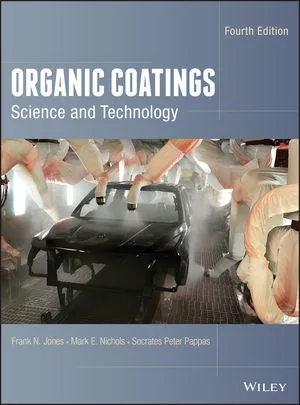UV Curing and Light Stabilizer Advances Can Help...Drive Automotive Profits

Use of UV light rather than heat to cure coatings offers promise as a means of helping auto manufacturers and automotive part suppliers to:
- Reduce floor space requirements and utility costs — UV curing does not require the large, energy-intensive ovens used in traditional curing.
- Reduce process time and increase first-run capability — UV-cured coatings are fully cured in seconds, dramatically reduced from the 30 minutes or more often needed for oven bake cycles. Quicker processing time reduces sag and dirt defects. Related benefits are found in reduced down time due to lowered need for online maintenance and elimination of the need for oven cleaning.
- Lower or eliminate VOC emissions — Solvent content required for UV curing operations ranges from 0–15%, compared to 40–60% solvent content for traditional curing.
- Cut equipment costs — Significant savings are possible with UV curing equipment vs. traditional ovens.
- Just-in-time delivery — Reduced “process to package” time, vital for part producers.
- Improve resistance to scratch and mar — Higher crosslink density provides major improvement in scratch and mar resistance over traditionally cured coatings.
- Assured durability — UV cured coatings have outperformed commercial 2-pack polyurethane in 8-year Florida studies for appearance retention and resistance to chemical degradation.
Ciba has expanded its line of photoinitiators and light stabilizers, which work well in combination in UV-cured systems. In addition to solvent-reduced and solvent-free formulations, high cure speed and low-temperature processing, UV-cured coatings are of strong interest to the automotive industry because of their scratch and chemical resistance.
Helping our customers develop weatherfast, UV-curable clearcoats is a high priority, with photoinitiators and compatible stabilizer packages utilizing combinations of UV absorbers (UVA) and hindered amine light stabilizers (HALS) now considered the state of the art. The filter effect of UVAs protects the substrate against color change and photochemical degradation which would, in turn, lead to delamination. HALS protect the coating against loss of gloss and — most importantly — against cracking.
The most promising compounds for providing synergistic solutions to automotive coatings market needs are combinations of the photoinitiators Ciba® IRGACURE® 184 for surface cure and IRGACURE 819 for curing through the entire coating, along with UVAs such as TINUVIN® 400, in combination with HALS such as TINUVIN 292 or 152. Exposure results under Florida conditions demonstrate that these compounds, used in combination in UV-cured clearcoats, deliver weathering performance that is at least comparable to thermally cured systems, while also providing all the advantages of UV-cured coatings.
Light Stabilizer Innovations for Auto Coatings
Our research is also focused on reactable, non-interacting light stabilizers. This market need parallels the growing use of coatings over plastics, and the use of urethane coatings over acid-catalyzed basecoats. Urethane and other advanced chemistry coatings are replacing acrylic-melamine clearcoats in OEM applications because of their generally superior acid rain and chemical resistance.The market needs for light stabilizers specifically designed for automotive coatings applications are escalating, where HALS have been used to improve weathering performance for more than 20 years. Their ability to scavenge free radicals produced by photolysis and photo-oxidation complements the performance of UV absorbers. The two stabilizer types are usually used in tandem to deliver maximum weatherability. The development of new reactable HALS and UVAs can meet needs for improved compatibility in polar coatings as well as reduced migration. In addition, work continues on development of high-purity powder forms, which are also ideal for use in the growing powder coating segment.
The new systems being introduced by Ciba are compatible with highly polar, highly cross-linked systems, such as polyester (or acrylic) urethanes and melamines. A new class of non-interacting HALS (NOR-HALS) possesses a reactable hydroxy functionality, enabling it to co-condense with melamine and isocyanate cross-linkers. As a result, it exhibits improved compatibility and migration resistance in many coatings systems. Potential applications include coatings-over-plastic substrates (especially polyurethanes), acid-catalyzed clearcoats, clearcoats over acid-catalyzed basecoats, and advanced “next generation” clearcoats.
This new class of products offers many advantages: they react quickly, are non-interacting, and exhibit outstanding solubility, thermal permanence and light stabilizing effectiveness. Their migration resistance makes them attractive for use in evolving wet-on-wet-on-wet applications, where the primer, basecoat and topcoat are layered one on top of the other and then cured with a single bake. Such growing applications pose particular migration challenges, which are met by the Ciba systems.
In addition, the low melting range is ideal for use in powder coatings, and developing UV/powder hybrid applications. The stabilizers are highly soluble in a wide range of HAPS compliant solvents.
For the future, Ciba is exploring ways to link its expertise in photoinitiators and HALS in new combinations to meet evolving automotive coatings market needs.
For more information, contact Ciba Specialty Chemicals, 540 White Plains Road, Tarrytown, NY 10592; phone 800/431.1900; fax 914/785.4253; visit www.cibasc.com.
Looking for a reprint of this article?
From high-res PDFs to custom plaques, order your copy today!





